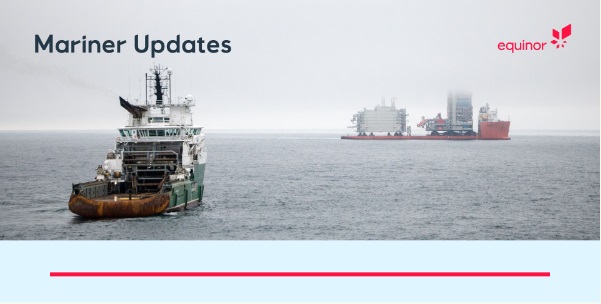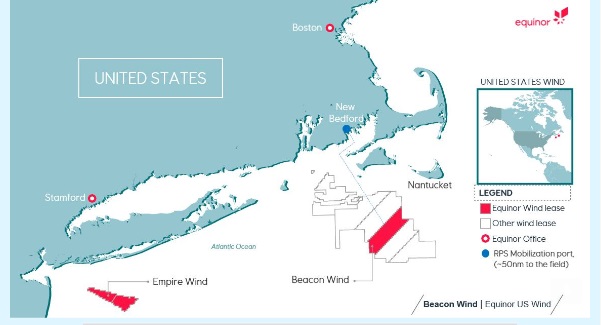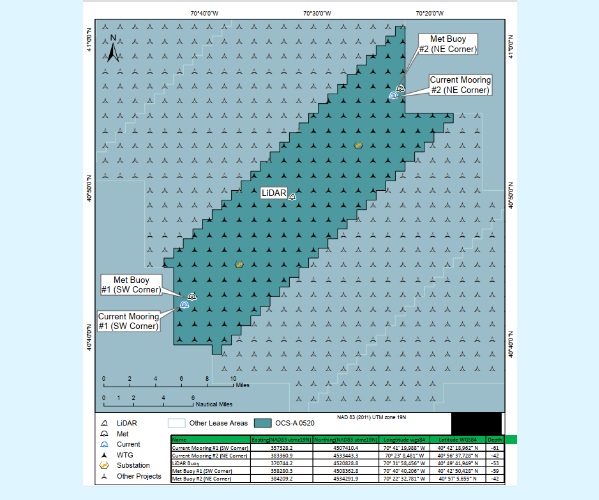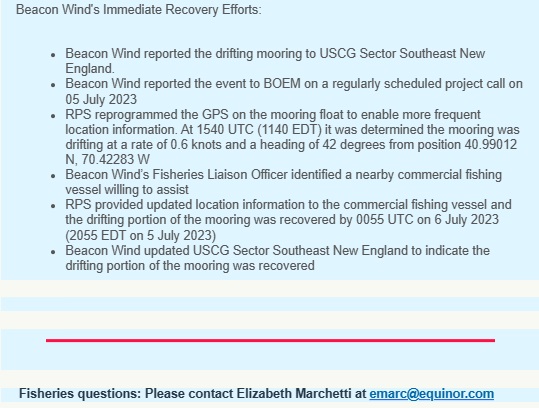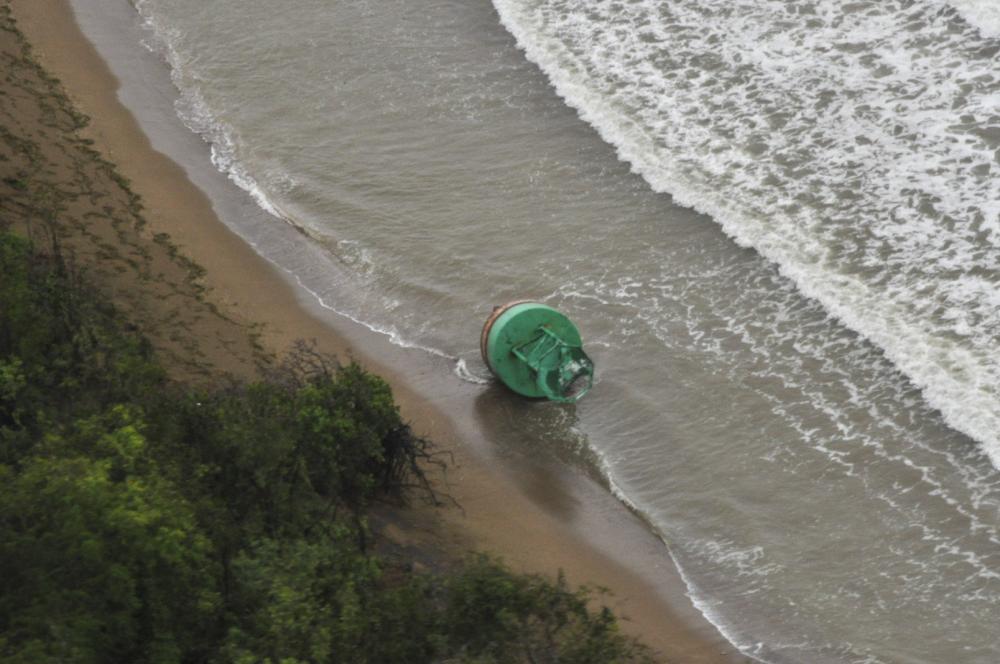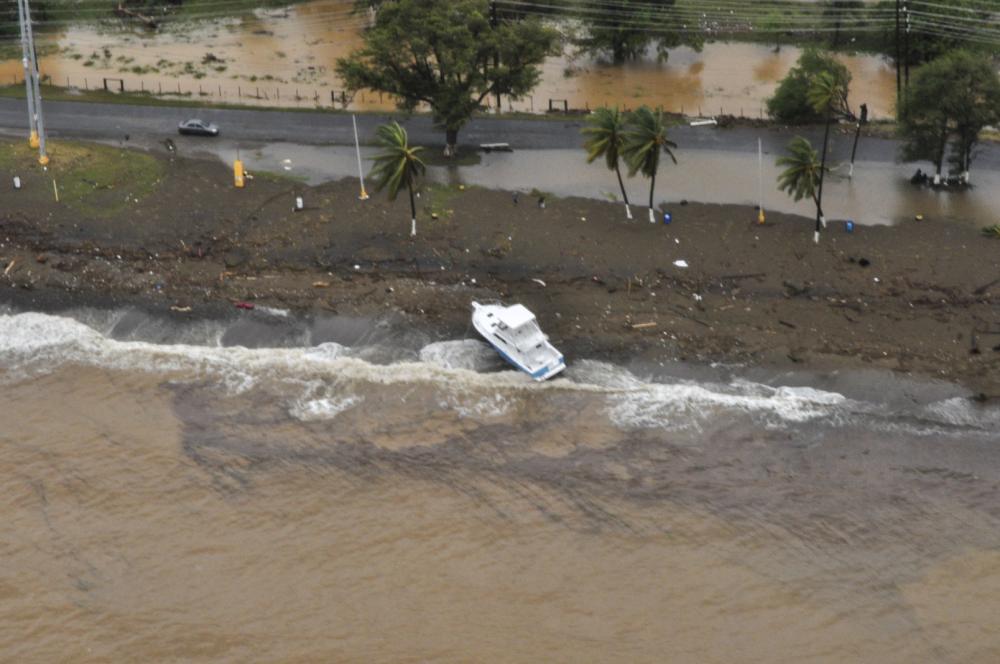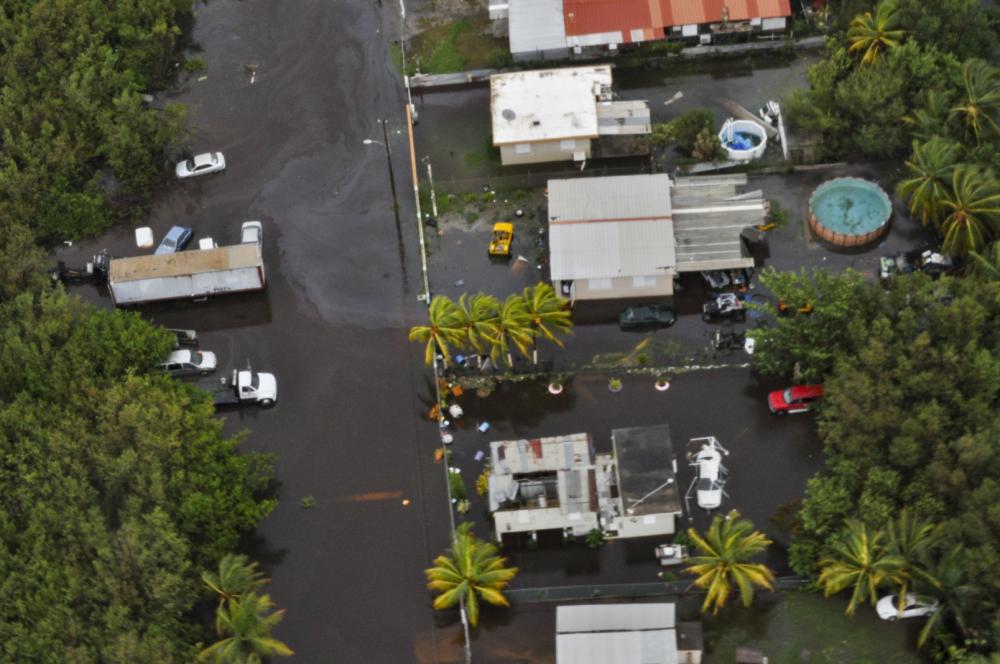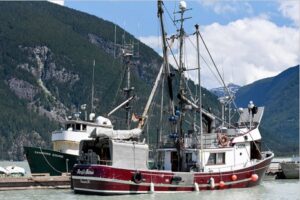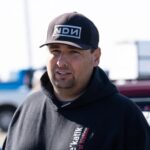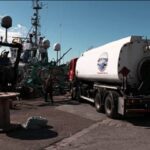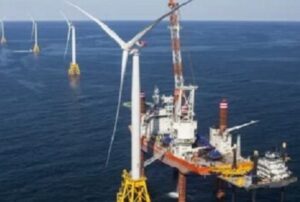Search Results for: Orin C
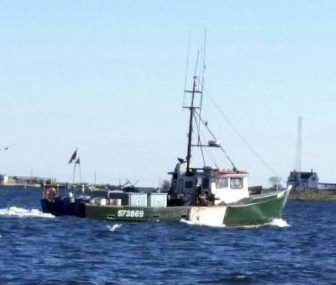
Bad hull, flooding led to fatal sinking of Orin C
The deadly sinking of the Gloucester-ported Orin C nearly 15 months ago probably was caused by structural problems with the vessel’s wooden hull and subsequent flooding, according to reports from the National Transportation Safety Board and Coast Guard released Thursday. The two reports detailed the marine tragedy that resulted in the drowning of 47-year-old Capt. David C. “Heavy D” Sutherland during the final stages of the Coast Guard’s rescue that saved crewmembers Rick Palmer and Travis Lane on the night of Dec. 3, 2015. Neither Palmer nor Lane could be reached Thursday for comment. The Coast Guard report did not recommend any changes to its training, rescue procedures or the equipping of its rescue vessels. That, however, does not mean it won’t make changes in the future, according to District 1 Deputy Commander Brad Kelly. “That is something the Coast Guard is always looking at in trying to determine what should be included into all of our rescue platforms,” Kelly said. “That is an ongoing process.” Continue reading the article here 21:01
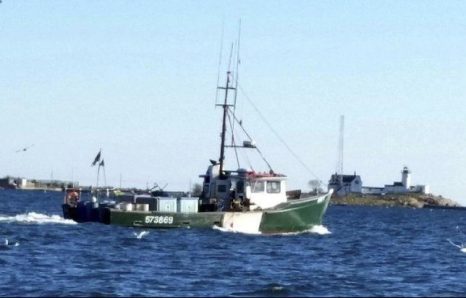
As anniversary nears, reports on deadly F/V Orin C sinking unfinished
Saturday will mark the one-year anniversary of the sinking of the Orin C and the death of Gloucester fisherman David “Heavy D” Sutherland, but the final federal reports on the deadly incident still will not be released until January. Representatives of the Coast Guard and the National Transportation Safety Board on Monday confirmed the new timetable for releasing the findings of the separate investigations and restated the government’s intention to release the reports simultaneously. “We were really pushing to have a completed report before the anniversary of the tragedy to help bring some closure up here,” said Lt. Karen Kutiewicz of the Coast Guard’s District 1 Headquarters in Boston. “That was our goal. Unfortunately, it’s not the reality.”The draft of the Coast Guard’s internal casualty investigation was completed earlier this year and forwarded during the summer to Washington, D.C., for review by officials at Coast Guard headquarters. In July, the NTSB said it expected to release the conclusions of its investigation “sometime in the fall.” An NTSB spokesman on Monday said the agency has not yet concluded its investigation and does not expect to have the final report until mid-January. Read the story here 09:01
Coast Guard completes F/V Orin C investigation – Draft report of rescue under review
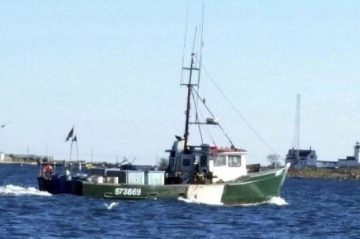 The U.S. Coast Guard is getting closer to finalizing its casualty investigation into December’s sinking of the Orin C and the drowning death of owner and Captain David “Heavy D” Sutherland during the rescue attempt that saved two crew members. A draft of the Coast Guard’s internal investigation has been completed at the Coast Guard’s District 1 Headquarters in Boston and now is under review at Coast Guard headquarters in Washington D.C., according to Lt. Karen Kutkiewicz, a public affairs officer for the service. “I have no definite timeline on when (the Coast Guard) will publish the final findings, nor where they are in the review process,” Kutkiewicz said in an email response to the Gloucester Daily Times. “The findings will be made public once finalized by Coast Guard headquarters.” The National Transportation Safety Board also is investigating the sinking of the Orin C on Dec. 3, 2015, about 12 miles off Thacher Island. The incapacitated 51-foot slime-eel fishing boat was being towed back to Gloucester Harbor through worsening seas, first by a Good Samaritan fisherman and later by the Coast Guard. Read the rest here 09:46
The U.S. Coast Guard is getting closer to finalizing its casualty investigation into December’s sinking of the Orin C and the drowning death of owner and Captain David “Heavy D” Sutherland during the rescue attempt that saved two crew members. A draft of the Coast Guard’s internal investigation has been completed at the Coast Guard’s District 1 Headquarters in Boston and now is under review at Coast Guard headquarters in Washington D.C., according to Lt. Karen Kutkiewicz, a public affairs officer for the service. “I have no definite timeline on when (the Coast Guard) will publish the final findings, nor where they are in the review process,” Kutkiewicz said in an email response to the Gloucester Daily Times. “The findings will be made public once finalized by Coast Guard headquarters.” The National Transportation Safety Board also is investigating the sinking of the Orin C on Dec. 3, 2015, about 12 miles off Thacher Island. The incapacitated 51-foot slime-eel fishing boat was being towed back to Gloucester Harbor through worsening seas, first by a Good Samaritan fisherman and later by the Coast Guard. Read the rest here 09:46
NTSB: No plans to salvage Fishing Vessel Orin C
 The National Transportation Safety Board confirmed today it will lead the investigation into last week’s sinking of the Orin C that cost the life of a Gloucester fisherman, but the agency has no plans to salvage the 51-foot vessel from the bottom of the Atlantic Ocean. Keith Holloway, an NTSB spokesman, said the investigation could take as long as 12 to 18 months to determine the probable cause of the Dec. 3 sinking that took the life of 47-year-old Gloucester fisherman David “Heavy D” Sutherland. “Information will be released as it becomes available,”,, Read the article here 12:05
The National Transportation Safety Board confirmed today it will lead the investigation into last week’s sinking of the Orin C that cost the life of a Gloucester fisherman, but the agency has no plans to salvage the 51-foot vessel from the bottom of the Atlantic Ocean. Keith Holloway, an NTSB spokesman, said the investigation could take as long as 12 to 18 months to determine the probable cause of the Dec. 3 sinking that took the life of 47-year-old Gloucester fisherman David “Heavy D” Sutherland. “Information will be released as it becomes available,”,, Read the article here 12:05
One Fisherman is dead, two are rescued after Gloucester fishing vessel Orin C sinks
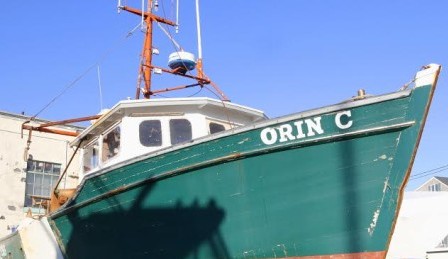 The Coast Guard rescued two fishermen and recovered a third deceased Thursday after their fishing boat sank 12 miles off Thatcher Island, Gloucester. A good Samaritan aboard the Foxy Lady notified watchstanders at the Coast Guard Sector Boston command center at about 3 p.m. that the fishing boat Orin C was disabled and needed a tow. The Foxy Lady began towing Orin C toward shore, but high wind and waves impeded their effort. A large wave reportedly crashed over Orin C’s bow, causing the boat to flood. Read the rest here 08:45
The Coast Guard rescued two fishermen and recovered a third deceased Thursday after their fishing boat sank 12 miles off Thatcher Island, Gloucester. A good Samaritan aboard the Foxy Lady notified watchstanders at the Coast Guard Sector Boston command center at about 3 p.m. that the fishing boat Orin C was disabled and needed a tow. The Foxy Lady began towing Orin C toward shore, but high wind and waves impeded their effort. A large wave reportedly crashed over Orin C’s bow, causing the boat to flood. Read the rest here 08:45
The Orin C at the Gloucester Railways in Rocky Neck.
A good portion of her keel was torn off earlier this week when she struck the rocks by Ten Pound island. Un-confirmed reports has it that vessel operator Dave (Heavy D.) Southerland was leaving the harbor on auto-pilot and left the wheel for a moment when an error caused the vessel to stray from the channel. There was some mild propeller damage that may or may not have been caused during the incident. 12:54:13
Pair of bills makes electronic monitoring of state-regulated fisheries a possibility
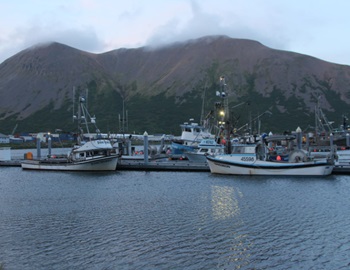 Nels Evens is a longliner and gillnetter, and the executive director of the Petersburg Vessel Owners Association. He says he’s not sure what the bills’ aim is. “Because it is so broad, and we don’t understand what it’s really trying to get at, we’re not supportive of it,” he said. The pair of bills – Senate Bill 209 and House Bill 294 – stem from a discussion at last year’s Board of Fisheries meeting. The Board was trying to figure out how to enforce regulations that require Area M fishermen to keep chum salmon, instead of tossing them back in favor of much more valuable King salmon. Area M is along the Alaska Peninsula and Eastern Aleutians. It intercepts some chum salmon bound for western Alaska. more, >>click to read<< 08:53
Nels Evens is a longliner and gillnetter, and the executive director of the Petersburg Vessel Owners Association. He says he’s not sure what the bills’ aim is. “Because it is so broad, and we don’t understand what it’s really trying to get at, we’re not supportive of it,” he said. The pair of bills – Senate Bill 209 and House Bill 294 – stem from a discussion at last year’s Board of Fisheries meeting. The Board was trying to figure out how to enforce regulations that require Area M fishermen to keep chum salmon, instead of tossing them back in favor of much more valuable King salmon. Area M is along the Alaska Peninsula and Eastern Aleutians. It intercepts some chum salmon bound for western Alaska. more, >>click to read<< 08:53
Maine Lobstermen Ask Court to Block State Agency from Enforcing a 24-Hour Location Monitoring Mandate Pending the Resolution of Their Lawsuit
 A group of Maine lobstermen have asked the United States District Court for the District of Maine to temporarily block state officials from enforcing the controversial requirement that lobstering boats be equipped with a 24-hour location monitoring system. At the beginning of January, five Maine lobstermen filed a lawsuit against the Maine Department of Marine Resources (MDMR) Commissioner Patrick Keliher, alleging violations of their Fourth and Fourteenth Amendment rights. “Before the Court is an unprecedented regulation that, if permitted to stand, would require federally permitted Maine lobster fishermen to install a tracking device on their fishing vessels that would monitor their movements on a minute-by-minute basis (and every six hours when the vessel is moored) ‘regardless of landing state, trip type, location fished or target species,’” the motion reads. more, >>click to read<< 06:44
A group of Maine lobstermen have asked the United States District Court for the District of Maine to temporarily block state officials from enforcing the controversial requirement that lobstering boats be equipped with a 24-hour location monitoring system. At the beginning of January, five Maine lobstermen filed a lawsuit against the Maine Department of Marine Resources (MDMR) Commissioner Patrick Keliher, alleging violations of their Fourth and Fourteenth Amendment rights. “Before the Court is an unprecedented regulation that, if permitted to stand, would require federally permitted Maine lobster fishermen to install a tracking device on their fishing vessels that would monitor their movements on a minute-by-minute basis (and every six hours when the vessel is moored) ‘regardless of landing state, trip type, location fished or target species,’” the motion reads. more, >>click to read<< 06:44
Lobstermen Sue State Agency for Mandating Installation of 24-Hour Electronic Location Monitoring System on Their Boats
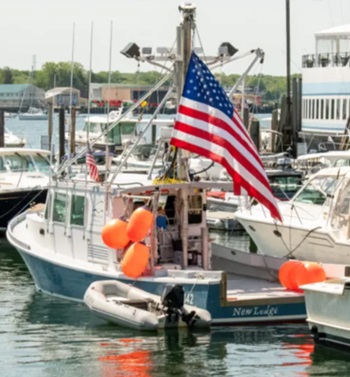 A group of five Maine lobstermen are suing Maine Department of Marine Fisheries (MDMR) Commissioner Patrick Keliher over new rules mandating that all federally permitted lobster boats be equipped with a 24-hour electronic location monitoring system. These mandated devices — provided by the MDMR — identify a vessel’s location every sixty seconds while in motion and once every six hours when stationary. Using one of these devices, a boat’s position is able to be accurately determined within 100 meters, or 328.1 feet. According to the lobstermen, this new requirement violates the Fourth and Fourteenth Amendments, as they allege that it jeopardizes their Constitutionally protected rights to privacy and due process. more, >>click to read<< 11:20
A group of five Maine lobstermen are suing Maine Department of Marine Fisheries (MDMR) Commissioner Patrick Keliher over new rules mandating that all federally permitted lobster boats be equipped with a 24-hour electronic location monitoring system. These mandated devices — provided by the MDMR — identify a vessel’s location every sixty seconds while in motion and once every six hours when stationary. Using one of these devices, a boat’s position is able to be accurately determined within 100 meters, or 328.1 feet. According to the lobstermen, this new requirement violates the Fourth and Fourteenth Amendments, as they allege that it jeopardizes their Constitutionally protected rights to privacy and due process. more, >>click to read<< 11:20
Exploring the viability of large-scale hatchery production of Atlantic surf clams for fishery enhancement
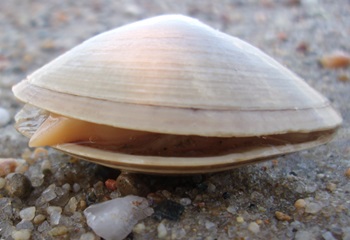 Fishery stock enhancement strategies – also known as restocking for conservation purposes, or sea ranching for economic purposes – have gained interest among U.S. stakeholders as challenges associated with food security, marine habitat degradation and potential job losses increase due to anthropogenic stressors. The Atlantic surf clam (Spisula solidissima) is considered one of the most important commercial clam species harvested in the United States. It is a large marine bivalve that is distributed from the Gulf of St. Lawrence, Canada to Cape Hatteras, North Carolina; however, the fishery for Atlantic surf clam is based off the Mid-Atlantic coast, where surf clams have historically been most abundant. more, >>click to read<< 13:18
Fishery stock enhancement strategies – also known as restocking for conservation purposes, or sea ranching for economic purposes – have gained interest among U.S. stakeholders as challenges associated with food security, marine habitat degradation and potential job losses increase due to anthropogenic stressors. The Atlantic surf clam (Spisula solidissima) is considered one of the most important commercial clam species harvested in the United States. It is a large marine bivalve that is distributed from the Gulf of St. Lawrence, Canada to Cape Hatteras, North Carolina; however, the fishery for Atlantic surf clam is based off the Mid-Atlantic coast, where surf clams have historically been most abundant. more, >>click to read<< 13:18
Tākaka fisherman who illegally removed monitoring device fined $20k, loses boat
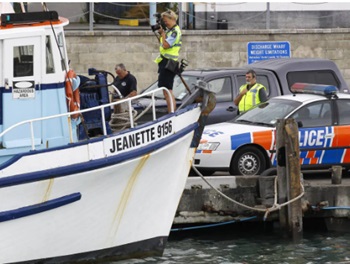 A fisherman who removed essential position monitoring equipment from his boat and then tried to hide it in a bag beneath the sea has been convicted in a case that is the first of its kind in the country. Tony Peter Phillipson has also had his boat forfeited after breaching rules designed to help monitor and protect New Zealand fisheries. Judge Tony Zohrab said in the Nelson District Court today that little of what Phillipson had done made any sense, but his explanation at the time “smelled like fish left in the hold for a couple of weeks” and was in the realm of “gross dishonesty”. more, >>click to read<< 07:15
A fisherman who removed essential position monitoring equipment from his boat and then tried to hide it in a bag beneath the sea has been convicted in a case that is the first of its kind in the country. Tony Peter Phillipson has also had his boat forfeited after breaching rules designed to help monitor and protect New Zealand fisheries. Judge Tony Zohrab said in the Nelson District Court today that little of what Phillipson had done made any sense, but his explanation at the time “smelled like fish left in the hold for a couple of weeks” and was in the realm of “gross dishonesty”. more, >>click to read<< 07:15
P.E.I. Fishermen’s Association calls for more timely, better monitoring in wake of federal report
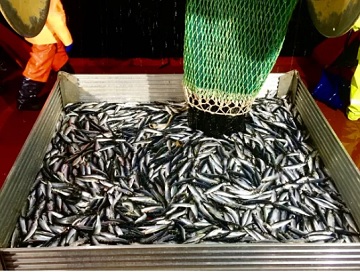 Executive director Ian MacPherson said a recent report from the federal environment commissioner underlined the importance of doing more, and better science, especially as the crucial herring and mackerel fisheries remain closed to Island fishers. “Herring and mackerel are the big ones here on Prince Edward Island, important fisheries to us, and we’d like to get them reopened — and we realize these are science-based decisions, but you need accurate and timely information,” MacPherson said. >>click to read<< 06:38
Executive director Ian MacPherson said a recent report from the federal environment commissioner underlined the importance of doing more, and better science, especially as the crucial herring and mackerel fisheries remain closed to Island fishers. “Herring and mackerel are the big ones here on Prince Edward Island, important fisheries to us, and we’d like to get them reopened — and we realize these are science-based decisions, but you need accurate and timely information,” MacPherson said. >>click to read<< 06:38
New tech designed with Cornish fishermen to transform bycatch monitoring
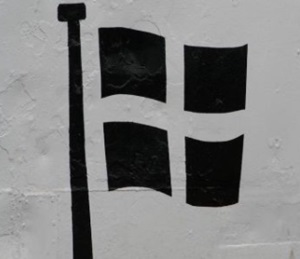 An innovative new tool being developed with fishermen in Cornwall aims to radically transform how by-catch is documented on board fishing vessels and, ultimately, prevent it happening. In a UK-first, Insight360 combines voice recognition and video information to deliver real-time insight and create a 360-degree view of what’s happening at sea during a by-catch event, that continuously improves over time. Refined with fishermen, the technology removes the need to manually review and add notes to footage, offering instead a way for skippers and crews to train a monitoring system to automatically recognise and record bycatch events as they happen. >>click to read<< 08:19
An innovative new tool being developed with fishermen in Cornwall aims to radically transform how by-catch is documented on board fishing vessels and, ultimately, prevent it happening. In a UK-first, Insight360 combines voice recognition and video information to deliver real-time insight and create a 360-degree view of what’s happening at sea during a by-catch event, that continuously improves over time. Refined with fishermen, the technology removes the need to manually review and add notes to footage, offering instead a way for skippers and crews to train a monitoring system to automatically recognise and record bycatch events as they happen. >>click to read<< 08:19
Fisheries and Oceans Canada doing a poor job of monitoring fishing industry: report
 A new report slams the federal Fisheries Department for failing to properly monitor Canada’s commercial fishing industry. The report from the federal environment commissioner, Jerry DeMarco, says Fisheries and Oceans Canada lacks the ability to collect timely and dependable data about what is being caught. DeMarco says the dearth of reliable data means the department can’t protect Canada’s fish stocks from overfishing. The report from the federal environment commissioner, Jerry DeMarco, says Fisheries and Oceans Canada lacks the ability to collect timely and dependable data about what is being caught.>>click to read<< 13:02
A new report slams the federal Fisheries Department for failing to properly monitor Canada’s commercial fishing industry. The report from the federal environment commissioner, Jerry DeMarco, says Fisheries and Oceans Canada lacks the ability to collect timely and dependable data about what is being caught. DeMarco says the dearth of reliable data means the department can’t protect Canada’s fish stocks from overfishing. The report from the federal environment commissioner, Jerry DeMarco, says Fisheries and Oceans Canada lacks the ability to collect timely and dependable data about what is being caught.>>click to read<< 13:02
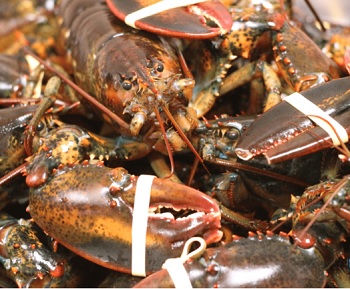
Observer companies dumped from monitoring of N.S. lobster fishery
This season, DFO will rely solely on an inshore industry association to assess what other species are being accidentally captured — what’s known as bycatch — in the lobster fishery from Halifax through the Bay of Fundy. Observer companies Javitech Atlantic in Dartmouth and Halifax’s Atlantic Catch Data have been part of the bycatch monitoring program since it was launched in 2018 to assess and demonstrate sustainability in the fishery worth half a billion dollars. Both companies are out for now. In recent years, they have not delivered anywhere near the sampling provided by the Yarmouth-based Southwest Lobster Science Society, which was created by five fishing associations to provide bycatch monitoring. >>click to read<< 08:30
A reporter went on the Jones Act Enforcer vessel monitoring Vineyard Wind. What she saw.
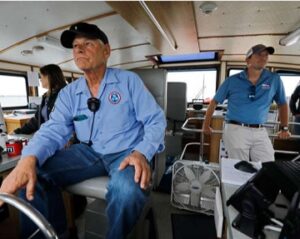 Aaron Smith, president and CEO of the Offshore Marine Service Association, was our host on this trip. It’s his intent on behalf of the association to be on the lookout for ships in violation of the Jones Act and taking jobs away from American workers. The ship is named after the Jones Act, a section of federal law that regulates maritime commerce in the United States by requiring that goods shipped between U.S. points be transported on ships that are built, owned and operated by United States citizens or permanent residents. Captain Rick Spaid and his crew sped through the water at about 17 knots give or take when he was able and brought us within about 0.5 nautical miles of the ships we saw. Photos, >click to read< 09:46
Aaron Smith, president and CEO of the Offshore Marine Service Association, was our host on this trip. It’s his intent on behalf of the association to be on the lookout for ships in violation of the Jones Act and taking jobs away from American workers. The ship is named after the Jones Act, a section of federal law that regulates maritime commerce in the United States by requiring that goods shipped between U.S. points be transported on ships that are built, owned and operated by United States citizens or permanent residents. Captain Rick Spaid and his crew sped through the water at about 17 knots give or take when he was able and brought us within about 0.5 nautical miles of the ships we saw. Photos, >click to read< 09:46

Courts threaten to sink federal fishery monitoring
NOAA suffered a major blow in February when a three-judge panel of the 5th U.S. Circuit Court of Appeals in Louisiana threw out a rule that would have required charter boats in the Gulf of Mexico to be equipped with electronic monitors to report fish catches. Fishermen complained that the devices would cost them as much as $3,000 per boat. And the agency may be poised for an even bigger setback from the Supreme Court. Justices last month said they would take up a case that could decide whether NOAA has the legal authority to force New England herring fishermen to hire third-party contractors to monitor their fishing at a cost of up to $700 per day. >click to read< 13:55

Ignoring dead whales, NOAA proposes another site survey off New Jersey
“Damn the whales, full speed ahead” seems to be the offshore wind policy of Biden’s NOAA. They now propose to approve yet another site survey, just 10 miles off Atlantic City. These surveys are the top suspect for the recent wave of dead whales, centered on New Jersey. The site is a big one because the offshore wind project is huge. Phase 1 is a whopping 1,500 MW, which means over 100 monster turbine towers. The survey area is around 1,500,000 acres or an incredible 2,300 square miles. Ironically the project is called Atlantic Shores, which is where all the dead whales are washing up. More deeply, the Atlantic Shores Wind Project has yet to be approved and may never be. Hugely disruptive site surveys should not be authorized until the Project is approved. >click to read< 13:57
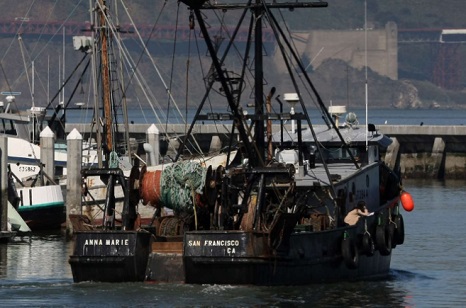
Oregon Fishing Industry Fed Up With Agency ‘Ignoring’ Their Offshore Wind Concerns
The West Coast Seafood Processors Association, the Midwater Trawlers Cooperative and the Oregon Dungeness Crab Commission claim their concerns about proposed offshore wind project call areas, areas where the agency is seeking public comment, and their impact on key fish populations due to the turbines’ electromagnetic field (EMF) cables, have been ignored by BOEM. They also worry about the impact offshore winds would have on their businesses and the entire state’s economy. “BOEM has told us that if Oregon doesn’t want this, they will back off and pursue other offshore wind areas, and we’ve made it pretty clear to them that Oregon doesn’t want this, and they’re still pushing forward,” Lori Steele, executive director of the seafood trade group West Coast Seafood Processors Association, told the DCNF. “They are giving us nothing but lip service,” she added. >click to read< 09:43

New monitoring rules for Northeast fishermen
Changes to U.S. rules about the monitoring of Northeast commercial fishing activities are going into effect this month with a goal of providing more accurate information about some of the nation’s oldest fisheries. The U.S. mandates observers to work onboard fishing boats to collect data and make sure fishermen adhere to rules and quotas. The National Marine Fisheries Service has adopted new monitoring rules for Northeast fishermen of groundfish, like haddock and flounder, to try to improve the accuracy of the data. >click to read< 11:57
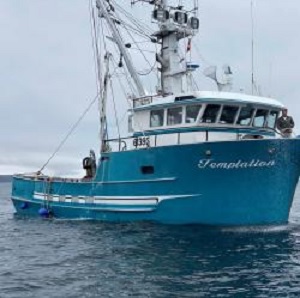
Electronic monitoring comes to Gulf of Alaska pollock fishery
Kiley Thompson knows the fishery well. He has been fishing in Alaska waters for nearly 30 years. After getting a job in college fishing for salmon, this eventually became his full-time profession. Today, he fishes along with three crew members in the Gulf of Alaska pollock fishery on F/V Decision, a 58-foot seiner/trawler based in Sand Point, Alaska. ‘The biggest challenge for us is getting observers, and you can end up losing fishing time waiting for them to arrive,’ Kiley Thompson said. In the face of these challenges, the Gulf of Alaska fleet turned to emerging electronic monitoring technologies. >click to read< 07:48
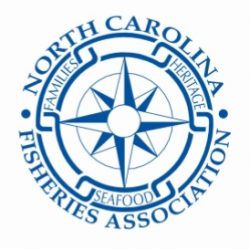
North Carolina Fisheries Association Weekly Update 01/09/2023 – Fisheries Monitoring and Data Collection/Legislative Update
The number of commercial fishermen in North Carolina has definitely been on a downward trend for some time. We have gone from 4,588 active commercial licenses in 2001 down to 2,170 active licenses in 2021 according to DMF’s most recent statistics. Although numbers of participants in our state have decreased by almost half in the last 20 years commercial fishing monitoring and data collection has not and NC commercial fishermen continue to provide a wealth of useful data that has created a permanent record showing where we came from and how we got there. The first commercial fishing data collection system I will talk about is the North Carolina Division of Marine Fisheries (DMF) fish house trip ticket program. This program started in 1994 and since then it has grown into one of the leading fisheries data collection programs in the country. >click to read the update< 12:20
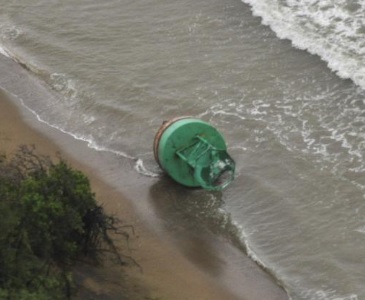
Coast Guard responding in wake of Hurricane Fiona, continues monitoring storm impacts
Personnel from the Seventh Coast Guard District in Puerto Rico and the U.S. Virgin Islands are responding to the aftermath of Hurricane Fiona, Monday. Crews from Coast Guard Sector San Juan and Coast Guard Air Station Borinquen conducted initial storm damage assessments throughout the region and are prepared to support urgent search and rescue needs. Fast Response Cutter crews conducted storm avoidance to prevent damage in port by heading out to sea and returned to San Juan today for fuel and logistics before resuming patrol missions. Photos, >click to read< 08:54
Coast Guard responding in wake of Hurricane Fiona, continues monitoring storm impacts
MIAMI — Personnel from the Seventh Coast Guard District in Puerto Rico and the U.S. Virgin Islands are responding to the aftermath of Hurricane Fiona, Monday.
Crews from Coast Guard Sector San Juan and Coast Guard Air Station Borinquen conducted initial storm damage assessments throughout the region and are prepared to support urgent search and rescue needs. Fast Response Cutter crews conducted storm avoidance to prevent damage inport by heading out to sea and returned to San Juan today for fuel and logistics before resuming patrol missions.
The Coast Guard set Port Condition FOUR today, opening the maritime ports in the U.S. Virgin Islands, and the maritime ports of Arecibo, Ceiba, Culebra, Fajardo, San Juan, Vieques and Yabucoa in Puerto Rico following the passing of Hurricane Fiona. The Port of San Juan is restricted to conducting daylight operations only until further notice. All other seaports in Puerto Rico remain closed under Port Condition ZULU until further notice, including:
- Guanica
- Guayama/Las Mareas
- Guayanilla
- Mayagüez
- Ponce
- Salinas/Aguirre
- Tallaboa
During Port Condition FOUR, port facilities are open to all commercial vessel traffic and cargo operations may resume, including bunkering and lightering. All mariners are advised to use caution due to floating debris and report any abnormalities to the Coast Guard.
During Port Condition ZULU, the port is closed to all commercial traffic except for traffic specifically authorized by the Captain of the Port. Port cargo operations are suspended, including bunkering and lightering until further notice.
Mariners can view the latest port updates on the Coast Guard’s Homeport site.
As Fiona continues to travel through the Caribbean islands and into the Atlantic, the Coast Guard is reminding the public of these important safety messages and warnings:
- Stay off the water. The Coast Guard’s search and rescue capabilities degrade as storm conditions strengthen. This means help could be delayed. Boaters should heed weather watches, warnings and small craft advisories.
- Evacuate as necessary. If mandatory evacuations are set for an area, the public should evacuate without delay. Coast Guard personnel and other emergency responders may not be able to evacuate or rescue those in danger during the storm.
- Secure belongings. Owners of large boats are urged to move their vessels to inland marinas where they will be less vulnerable to breaking free of their moorings or to sustaining damage. Trailer-able boats should be pulled from the water and stored in a place that is not prone to flooding. Those who are leaving their boats in the water are reminded to remove EPIRBs and to secure life rings, lifejackets and small boats. These items, if not properly secured, can break free and divert valuable search and rescue resources to ensure people are not in distress.
- Stay clear of beaches. Wave heights and currents typically increase before a storm makes landfall. Even the best swimmers can fall victim to the strong waves and rip currents caused by hurricanes. Swimmers should stay clear of beaches until local lifeguards and law enforcement officials say the water is safe.
- Be prepared. Area residents should be prepared by developing a family plan, creating a disaster supply kit, having a place to go, securing their home and having a plan for pets. Information can be found at Ready.gov.
- Stay informed. The public should monitor the progress and strength of the storm through local television, radio and Internet. Boaters can monitor its progress on VHF radio channel 16. Information can also be obtained on small craft advisories and warnings on VHF radio channel 16.
People in distress should use 911 to request assistance whenever possible, or VHF radio channel 16 for mariners. Social media should not be used to report distress.
For information on Hurricane Fiona’s progress and hurricane preparedness, please visit the National Hurricane Center’s webpage.
For more breaking news follow us on Twitter and Facebook.
-USCG-
U.S. Coast Guard 7th District Puerto Rico and U.S. Virgin Islands
Contact: Coast Guard Puerto Rico PA Office
Office: 787-729-2381
After Hours: 787-510-7923
7th District Puerto Rico and U.S. Virgin Islands online newsroom
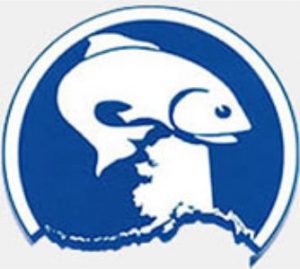
Battlefront: Salmon bycatch, electronic monitoring on the table at Sitka meeting of NPFMC
The bycatch of chinook and chum salmon is on the agenda, as the spring meeting of the North Pacific Management Council gets underway in Sitka this week (June 9-14). In addition to hearing how much salmon is being intercepted in the Gulf of Alaska and Bering Sea by the trawl fisheries, the council will review a proposal to supplement the human observer program with electronic monitoring. >click to read< Note: Find links to the Council’s agenda and meeting livestream here.

New Zealand: Rollout of camera monitoring on commercial fishing vessels confirmed
Up to 300 inshore fishing vessels will be fitted with the technology by the end of 2024, providing independent, accurate information about fishing activity and better evidence for decision-making,” Oceans and Fisheries Minister David Parker said. “It will be supported by cutting-edge artificial intelligence software that will help put New Zealand at the forefront of camera monitoring technology. The introduction of on-board cameras is a key component of the Government’s fisheries reforms. It follows the 2019 roll out of cameras on vessels operating in core Māui dolphin habitat, and builds on work initiated in 2017 by the then-Minister, Nathan Guy. >click to read< 10:25








